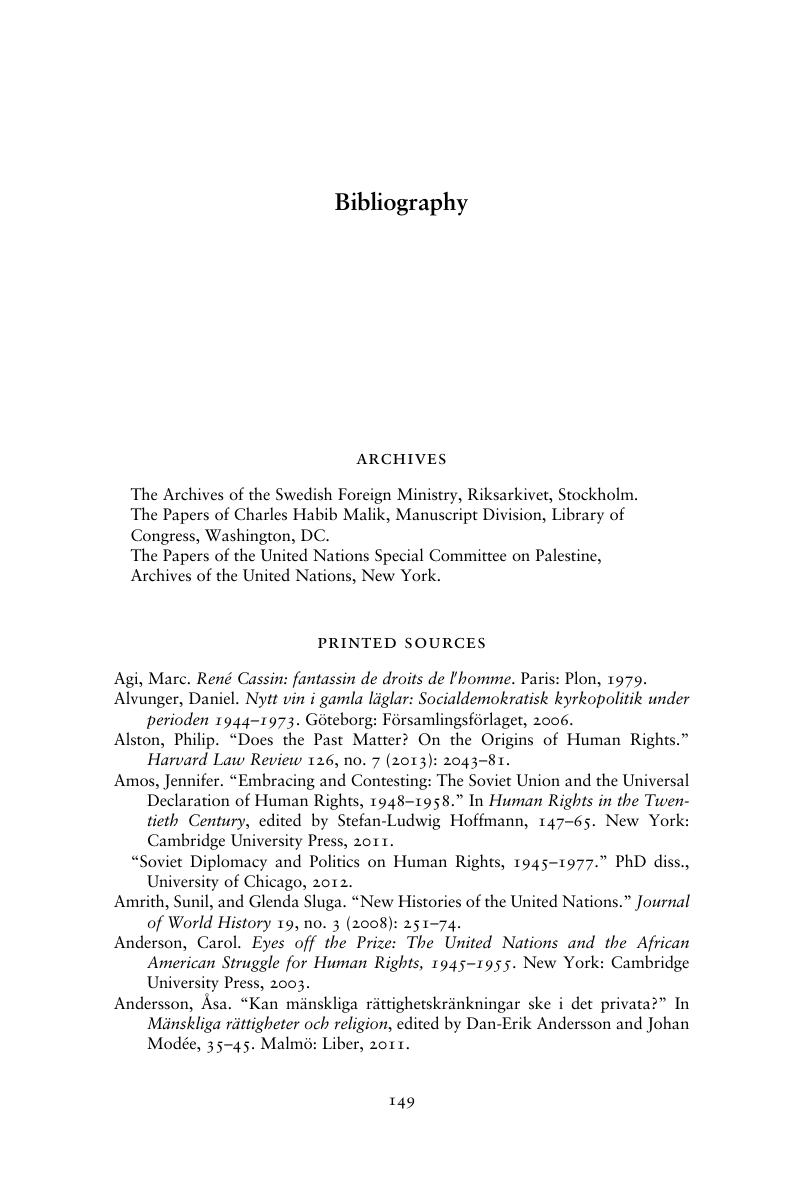Book contents
- Religious Freedom and the Universal Declaration of Human Rights
- Human Rights in History
- Religious Freedom and the Universal Declaration of Human Rights
- Copyright page
- Dedication
- Contents
- Preface and Acknowledgments
- Abbreviations
- Introduction
- 1 Freedom of Thought and Conscience
- 2 The Right to Change Religion or Belief
- 3 In Community with Others
- Conclusion
- Bibliography
- Index
- References
Bibliography
Published online by Cambridge University Press: 29 June 2017
- Religious Freedom and the Universal Declaration of Human Rights
- Human Rights in History
- Religious Freedom and the Universal Declaration of Human Rights
- Copyright page
- Dedication
- Contents
- Preface and Acknowledgments
- Abbreviations
- Introduction
- 1 Freedom of Thought and Conscience
- 2 The Right to Change Religion or Belief
- 3 In Community with Others
- Conclusion
- Bibliography
- Index
- References
Summary

- Type
- Chapter
- Information
- Religious Freedom and the Universal Declaration of Human Rights , pp. 149 - 166Publisher: Cambridge University PressPrint publication year: 2017



